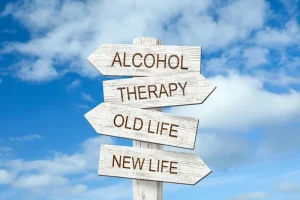
They could provide expert medical supervision, not available to athletes from less wealthy states, to ensure that drugs are used in ways that minimise harm and maximise their effect. However, lifting the doping ban would allow – perhaps even incentivise – athletes to ingest dangerous or untested drugs. Supporters of enhanced drug use in sports sport suggest that this presents no moral concern, provided that athletes give free and informed consent. The Enhanced Games seeks to answer these questions by removing all restrictions on doping. They can endure the discomfort of training and conditioning and seem to thrive on the discomfort and physical gain.

Test methods
- The key considerations for banning doping were to protect the health of athletes taking substances and to ensure a fair playing field.
- Athletes take human growth hormone, also called somatotropin, to build more muscle and do better at their sports.
- One reason athletes were vulnerable to such abuse is due to the nature of the risk environment in which these systems operated.
- Steroids are easily the most well-known type of doping drug; however, they are not the only type.
- Suspensions related to substance abuse saw a sharp uptick in the NFL beginning in 2012, jumping to 82 suspensions in 2012 from 21 suspensions in 2011.
- Viewers didn’t seem to care, if they even knew, that a player who recently had been suspended under the league’s performance-enhancing drugs policy helped the San Francisco 49ers beat the Green Bay Packers in the playoffs last month with a key blocked punt in the fourth quarter.
With intelligence-driven testing, the idea is to profile and target athletes suspected of doping based on observations, whistleblowers, unusual speed or weight increases, or if they’re coming back from an injury. Similarly, the NFL tests the urine of every player in training camp and also tests the urine of 10 random players per team each week from the preseason through the postseason. In the offseason, urine testing is done at the discretion of the testing program’s independent administrator, up to a maximum of six offseason tests per player. One way to tell how serious a league is about catching dopers is by considering how it selects players for urine or blood testing. The USA TODAY Sports database only includes suspensions that have been publicly revealed. It still provides a window into how pervasive the problem is among certain players, what the most popular drug has been (according to players) and how players usually say they didn’t take these drugs knowingly, which is at least sometimes true.
- After the intervention, participants in the intervention condition reported less risky alcohol use than those in the control condition (Kingsland et al., 2015).
- AddictionResource fact-checks all the information before publishing and uses only credible and trusted sources when citing any medical data.
- Anti-Doping Agency, points out that while the NFL conducts a high number of drug tests per year – estimated at 12,000-plus – the league’s anti-doping policy isn’t as good as it could be if it really wanted to detect the true level of PED use in the game.
- Mejía failed three drug tests in a row and received an 80-game suspension, followed by a 162-game suspension, before his permanent ban, showing an evident inability to stop using the steroid even though it was costing him his career and livelihood.
- It proved to be a worthy incentive for the athletes to consume substances to improve their performance, even with the side effects that many of them caused, such as psychosis.
- By comparison, only 3 games have been missed by Pittsburgh Steelers players due to suspension, while the Indianapolis Colts dwarf that number with 54 games missed.
‘Intelligent’ testing?
Prior to entering the league, only the NFL requires pre-employment testing for all players, although in the MLB, all players are subjected to testing within five days of reporting for spring training. The NBA, NHL, NCAA, and all other professional leagues do not require pre-employment testing. There are two different types of controls that can be conducted in competition or in training.

Students enjoy outdoor education program

The NFL and NFLPA even sent out a warning about this risk of eating meat produced in Mexico or China. Though the types of drugs involved in these suspensions is confidential, Adderall is by far the most popular drug named by players. A number of players have therapeutic-use exemptions for it if they’ve been approved for them by the testing program’s independent administrator or medical advisor. Under a doctor’s prescription, it is used to treat attention deficit hyperactivity disorder. But it also is used to increase energy and focus, and those who are suspended for it do not have exemptions. Anti-Doping Agency, points out that while the NFL conducts a high number of drug tests per year – estimated at 12,000-plus – the league’s anti-doping policy isn’t as good as it could be if it really wanted to detect the true level of PED use in the game.
As a part of a broader ‘war on drugs’ climate (Coomber, 2014; Henning & Dimeo, 2018), anti-doping policies tend to increase risk across categories for doping athletes. The prevalence of doping is unclear, though there is a significant gap between prevalence estimated by researchers and the official testing results. It is difficult to determine the effect anti-doping policies have had on doping prevalence, as there were no baseline prevalence studies before WADA’s founding. However, the discrepancy between the positive test rate and even the lowest prevalence estimates indicate that a large number of athletes who report engaging in doping are not being detected, potentially exacerbating PED-driven inequalities between athletes.

Doping groups may respond to this by enlisting ‘doping doctors’ who can procure or prescribe higher quality substances, or by securing other trusted suppliers. This echoes sport harm reduction policy proposals for medically supervised doping (Savulescu, Foddy, & Clayton, 2004; Kayser et al., 2007). In countries where the use of these drugs is controlled, there is often a black market trade of smuggled or counterfeit drugs. In countries where anabolic steroids are strictly regulated, some have called for regulatory relief. Anabolic steroids are available over-the-counter in some countries such as Thailand and Mexico.
Athlete biological passport
Proponents of criminalizing doping argue that doping is generally linked to other crimes such as money laundering and corruption, and clean athletes are being literally robbed of endorsement deals and other financial gains when doped athletes win. Opponents of allowing athletes to use stimulants argue stimulants are dangerous, can result in death, and do nothing to promote the health of the athlete, and that the cultural acceptance of stimulant use should change. Proponents of allowing athletes to use stimulants argue that Air Force pilots, long haul truckers, and others use stimulants without stigma, and that their use does not lessen the integrity of the game.
Russian Olympic doping saga shows need for a radically different approach
Most of these studies focus on alcohol use, but in some cases their findings may translate to other substances. It is unclear what will be the final outcome of doping war, but new questions and issues constantly present new challenges for both groups. For example, how each side will respond and adjust when unexpected outside forces – such https://ecosoberhouse.com/ as the current Covid-19 pandemic that has led to the postponement of World and Olympic level events – upset the tug of war. Future research on anti-doping policy and harm reduction may look more closely at the ways known doping systems have developed and their strategies for reducing various risk factors in order to enable doping.
- Similarly, athletes who receive support from public entities may feel the need to provide a return on that investment through medals or other victories, leading to a willingness to take more risks.
- It does not affect the actual mental anxiety but takes care of the physical manifestations.
- An athlete’s passport purports to establish individual baseline hormone/blood levels, which are monitored over time for significant changes.
- To date, TMS consists mostly of studies involving alcohol, cocaine and nicotine with very few looking at methamphetamine use which will not be discussed at this time.
A High-Profile Case of Anabolic Addiction
As early as 1963, France had been the first country to enact anti-doping legislation. Other countries followed suit, but international cooperation in anti-doping affairs was long restricted to the Council of Europe. In the 1980s, there was a marked increase in cooperation between international sports authorities and various governmental agencies.
What should I do if I need to take medicine for a health reason?
However, the role that they best play in sports medicine is unclear and fraught with difficult ethical questions. The sports medicine physician is clearly challenged in these situations, and hopefully the facts and data presented in this issue of Sports Health will aid the discussion and decision-making process. Having a blood transfusion to increase the number of red blood cells in the body is an example of this. The right treatment for an athlete depends primarily on how long they have been struggling with substance abuse, the substance they are abusing and their history of relapse or lack thereof. Whatever the athete’s lifestyle or goals, there is a treatment program to suit their needs.




















